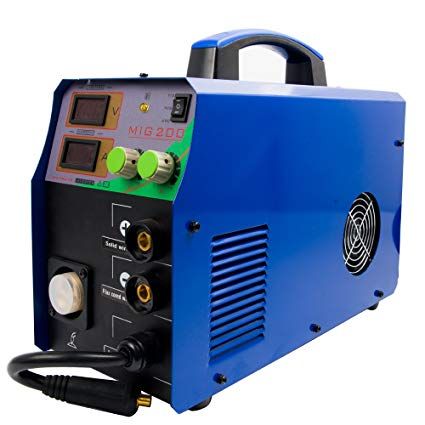If earlier only professionals were engaged in welding, today welding machines have become so convenient, functional and easy to use that home craftsmen are happy to use them in everyday life. Indeed, why pay money to a welder if you can buy a good machine and do minor work on the site yourself. For example, to weld a fence or other metal parts, to fix something, to strengthen it in some places, to conjure over your car – all these are simple welding jobs that are quite within the reach of an intelligent, economic man.

Therefore, modern welding machines are widely used not only in professional construction, repair, but also at home, in the country, in a workshop or garage for joining metals. Metal products turn out to be one-piece, and the seams are strong and wear-resistant, but only if the welding machine is chosen correctly, taking into account all the nuances and criteria. I will tell you in this article how to make the right choice, choose a welding device for your needs and types of metals. You will learn what performance indicators should be taken into account in the first place, what types of welding machines are suitable for home work, what are their features. I will explain what power, welding method and duration are ideal for household tasks.
The principle of operation of welding machines
Submerged arc welding joins metals using electrodes that do not melt. Any type of metal, both ferrous and non-ferrous, can be welded using this method. All these processes can be performed by a household welding machine.
For the first time, the engineer Slavyanov used the electric arc method for welding metals at the end of 1880. Since 1905, this method has been used in industry, in large enterprises. Before that, welding was carried out under three-phase voltage (380V). This was the main reason for the use of an electric arc welding machine in various enterprises.
The principle of operation of the welding machine is the use of high temperatures due to the electric arc, which reach a thousand or more degrees. These high temperatures are directed to the junction of the metals by the burner. When the electrodes approach each other, a small short circuit is obtained due to the electric arc. Thus, the voltage gradually increases until the moment when air breakdowns appear, after which a discharge is obtained (this stage is accompanied by the appearance of sparks). The next step is to close the electrical circuit. Then the so-called plasma is created, the resistance decreases.
The welding machine for the home and garage must operate without interruption under single-phase voltage. Also, due to the household appliance, the current strength should increase to at least 200 amperes, while the voltage should decrease.
What are the types of welding machines
There are several types of welding machines that are suitable for a garage and a summer residence.
This:
- transformer types;
- rectifiers;
- inverters.
Transformer types of welding machines are the most popular. The advantages of such devices include reliability in operation, ease of use and repair, simple design, affordable cost. The principle of operation of such devices is to convert high mains voltage into low voltage, while low current is converted into high current. Transformer welding machines also have some disadvantages – large dimensions, low efficiency (this figure reaches a maximum of 70-80%, this is not enough for welding metals), high power consumption. It is better for the house to choose a more economical option. Moreover, only an experienced welder can handle this type of unit, a beginner in welding will not be able to make a high-quality welding seam. The reason for this is the difficulty in controlling the electric arc. It will also be difficult for a beginner to cope with the choice of current strength, since the current change occurs mechanically.
Rectifiers are welding units, the principle of operation of which resembles transformer types of devices. The electric arc of this device is much more stable, that is, the work takes place without power surges. The principle of operation of welding rectifiers is similar to the operation of welding transformers, only the current, after being converted, passes through special silicon or selenium type rectifiers.
Welding rectifiers have the following advantages:
- ease of use – even a beginner in welding can handle such units;
- welding of any type of metal, including cast iron structures;
- high quality welding seam;
- dimensions and weight are much smaller than those of transformers;
- no splashes from metal during operation.
The disadvantages include the high price, the lack of a cooling system (the device is forced to cool with a fan), the complexity of the design (the design of the rectifier includes additional elements that are not in the transformers: devices for adjusting the start, throttle, various fuses and thermostats).
Inverter welding method – the best solution for home
For home, it is better to choose a welding inverter – a modern welding machine that has many advantages:
- work safety;
- high performance (the device can work for several hours without interruption);
- high efficiency, which is up to 95%;
- the ability to weld metals of any complexity in any position;
- adjustment of the current strength, which is performed by smooth, even movements;
- no splashing of metal during operation;
- the possibility of using electrodes of different types;
- the presence of a protection system against overheating and overload;
- small size and weight;
- quick ignition of the arc;
- ease of use – even the most inexperienced master can handle this equipment.


